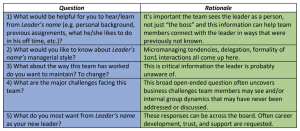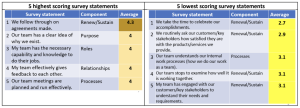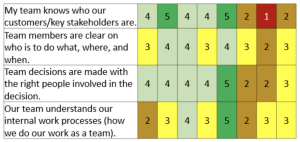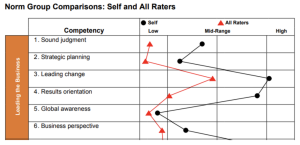We all know the score: that post-pandemic it is more important than ever that the workforce gets re-engaged with their work.
But what’s often under-appreciated is the extent to which employee engagement is actually impacted by a leader’s behavior.
So if we’re really to re-engage the workforce, the task that’s really needed is to understand the extent to which our leaders engage employees. This is even more necessary when the organisation has new leaders.
So how should HRDs do this? The answer lies in looking at New Leader Assimilation.
New Leader Assimilation (NLA)
For leaders who are in a new organization, or have a new team, New Leader Assimilation (NLA) is a highly effective tool.
Originally developed by General Electric, NLA’s are widely used by many organizations – typically done in the first three months of a new leaders’ appointment – but many medium size companies have never heard of them.
But they are actually extremely easy to do, and they can yield a significant amount of insight.
Conducting an NLA
Typically, a facilitator will ask a leader’s direct reports five key questions (usually via an online survey) – questions which each have a rationale behind them. These questions (and rationales) could be:

The NLA process is
- Send an online survey to participants
- Facilitator reviews responses with the leader
- Send responses to participants to review prior to the session
- Group meets (via video-conference or face-to-face).
For the group meets, the steps should be
- Leader does a five-minute kickoff, then leaves the room.
- Facilitator meets with the team for an hour to discuss the results of the online survey and adds more information.
- During the second hour, team members return to work while the facilitator and leader prioritize what to discuss.
- The team then reconvenes for an hour, for a dialogue.
Team Alignment
Four to six months after the NLA, the team can do a team alignment session. The primary focus of this is to measure how well the team is aligned around three main areas: tasks, relationships, and processes. As Dr Oscar Mink – in his classic book, Groups at Work, observed: “A team without a sense of purpose will wander capriciously from task to task despite the best of team-building efforts. Trying to increase teamwork for a group with a poor sense of purpose is like trying to build a house without a foundation.”
Consider surveying the team to measure these using simple statements (and an agreement scale), like: ‘Our team has a clear idea of why we exist’; or ‘Our team stops to examine how well it is working together’.
A variety of open-ended comment questions could be:
- From either a business impact or internal team effectiveness standpoint, what should this team start, stop or continue doing?
- What has worked well in how leader’s name is supporting your team?
- What are some opportunities for leader’s name to support the team more effectively?
After sharing the survey results with the Leader first, try a one-hour workshop with the team to identify one or two items the team can work on to improve their effectiveness. Review the five highest scoring items, and the five lowest scoring items, as shown below:

Often, but not always, responses to the open-ended questions will map nicely to the agreement scale responses. Where there are differences, the team leader should want to know how much variance there is within the team’s scores. Either way, between the Task, Relationship, Process statements and the open-ended comment questions, there are always one or two key things identified that the team and, just as importantly, the leader can work on. In this example, we see there are significant outliers in responses to four of the statements.

Four to six months later, the leader can get upward feedback from his team (via a brief survey or a more elaborate upward feedback process), or by using a full 360 degree feedback process. An excellent 360 feedback tools is Benchmarks, from the Center for Creative Leadership. Here, while the Manager version identifies potential derailers, the Executive version uses normative data to compare your Executive to other Executives around the world.
In the example below, the Executive scored himself highly in “Leading change” and “Results orientation” but the composite score of his raters scored him much lower.

My experience using this process has been quite positive, with many clients over the years.
